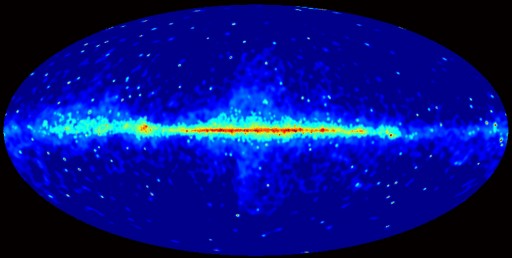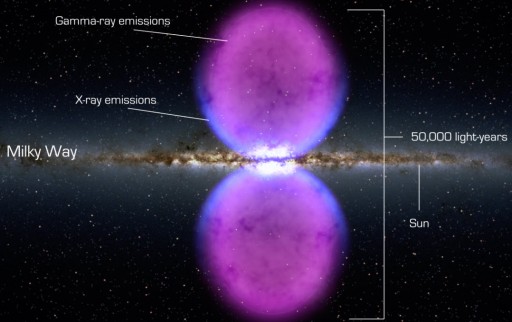Mysterious giant objects discovered in center of our galaxy
March 18, 2012
The Fermi Gamma-Ray Telescope has just picked up “crazy-energetic photons,” says Dave Thompson, an astrophysicist at NASA’s Goddard Space Flight Center.
“And it’s detecting so many of them we’ve been able to produce the first all-sky map of the very high energy universe.”
“About a third of the new sources can’t be clearly linked to any of the known types of objects that produce gamma rays,” Thompson says. “We have no idea what they are.”
Among them are super massive black holes called blazars, the seething remnants of supernova explosions, and rapidly rotating neutron stars called pulsars.
Fermi bubbles
Some of the gamma rays seem to come from “Fermi bubbles” — giant structures just discovered two years ago that emanate from the Milky Way’s center and span some 20,000 light years above and below the galactic plane. Exactly how these bubbles formed is another mystery, but they may be the remnant of an eruption from a supersized black hole at the center of our galaxy, astronomers say.
“We don’t fully understand their nature or origin,” said Harvard-Smithsonian Center for Astrophysics astronomer Doug Finkbeiner, who discovered the bubbles by processing publicly available data from Fermi’s Large Area Telescope (LAT) — the most sensitive and highest-resolution gamma-ray detector ever launched. Gamma rays are the highest-energy form of light.
Other astronomers studying gamma rays hadn’t detected the bubbles partly because of a fog of gamma rays that appears throughout the sky.

